- Home
- Antonia Fraser
Royal Charles: Charles II and the Restoration Page 14
Royal Charles: Charles II and the Restoration Read online
Page 14
Meanwhile, the Kirk itself, like Shylock, determined to extract the due and forfeit of its bond. So relentless was its treatment of the young King, pressing upon him, amongst other humiliations, the need to denounce both father and mother, that there must have been a measure of revenge in it against the whole royal house of Stuart. There was an actual day appointed to bewail the sins of the late King and the royal family. Perhaps, like Shylock again, the Kirk was seeking to ‘feed fat the ancient grudge’ it had against that family which had so sparingly accepted its precepts. Otherwise, the King yawned his way through the sermons, which were both infinitely long and very frequent. And the Scots’ social life was as bleak as their church-going. Grace before a meal could stretch interminably: ‘At dinners, they lay as fiercely about ’em as in the Pulpit.’30
Even without the sufferings outlined above, the Scots were probably not a people it was immediately possible to love, if you had been nurtured in the courts of England and France. Charles had already known poverty, but it was poverty due to keeping up the state of a bankrupt King. Even the English soldiers of the Commonwealth commented disdainfully in their letters home on the low standards of Scottish life: tables, windows, cupboards all with ‘shut’ written in large characters on them, and women who were so dirty and ill-favoured that they resembled those witches the Scots were so fond of burning. The mixture of religious fanaticism and low living did not endear itself to the newly acclaimed King of Scotland. He kept a perfect composure in public. But inside himself he brooded. To Dr King, Dean of Tuam (and thus a passionate Anglican), he observed in conversation, ‘The Scots have dealt very ill with me – very ill.’31 It was an ominous remark.
The final irony of all the King’s Scottish experience was provided by the fact that, exactly two months after he swore the Oath of the Covenant at Speyside, the entire justification for the gesture, the Scottish army, was vanquished beneath the hooves of Cromwell’s victorious cavalry at Dunbar. So that the Covenanter Scots, far from constituting that mighty host which would place the King on his English throne, became a spent and impotent force, as once the Engagers had been.
The Commonwealth command had not been idle while Charles disputed with the Kirk. Cromwell had returned from Ireland in the early summer, having quelled the country against future revolt, and almost immediately set out on a punitive expedition against Scotland. Officially it was described as a preemptive strike: the Commonwealth Army was marching purely in order to stop the Scots invading England on behalf of King Charles.
At the exact moment when King Charles, shackled by the Oath, set foot in Scotland, Cromwell’s fortunes did not, for once, look particularly propitious. And throughout August 1650, an exceptionally wet and nasty month, even by the standard of such Scottish summers, the astute Scottish general David Leslie was able to taunt Cromwell by guerrilla methods. In the mountainous, rainy south of Scotland, Cromwell’s tentless troops suffered; at the same time they found it impossible to come to grips with Leslie.
At this point the Scottish leaders were riding high. They had their young lion bound, the old beast of England hemmed in. They even found it in their fanatic hearts to instigate another series of purges of the armed forces, based on religion. The Act of Classes removed a number of bonny fighters from the Scottish ranks. At The Hague the reckless action was compared to that of the people of Jerusalem, fighting among themselves when Vespasian pressed the town.32 Nevertheless, by the end of August the Scots had, in their own view, caught Cromwell and his exhausted forces, many of them sick, in a proper trap. He was confined on the coast road south, between the devil, in the shape of Leslie on the commanding heights above him, and the deep grey waters of the North Sea on his left.
King Charles, no more than an adjunct to the Scottish action, lounged at Perth. And it was here that he received the news that on 3 September Cromwell, in a dramatic escapade worthy of the most adventurous hero of romance, had not only eluded the trap, but had also defeated the vastly superior home forces. There is one story that Charles actually fell on his knees in thanksgiving when he received the news, and another that he threw his cap in the air for joy.33 Both are probably apocryphal; but they symbolize the acute dislike and resentment the King now felt against the Scots.
In personal terms, Charles was infinitely more devastated by the news of the death of his sister Elizabeth, shortly after Dunbar.34 The poor young Princess died in captivity at Carisbrooke Castle, only two days before permission arrived from Parliament for herself and her brother Henry to leave at last for the Continent. It was the final horror that little Henry was informed that his sister had died of grief because Charles had taken the Oath of the Covenant. In fact, she died of consumption; the poet Henry Vaughan aptly wrote of her as ‘a rose-bud born in snow … sprung to bow/To headless tempests, and the rage/Of an incensed, stormy age’.fn1 She died with her cheek resting on the Bible her father had given her the day before his execution: ‘Come unto Me, all ye that travail and are heavy laden, and I will give ye peace.’
In Scotland Charles was young and human enough to rejoice in his heart at the humiliation of his own persecutors. As for their reaction to this holocaust inflicted on them, its flavour may be judged by a letter to Charles from Robert Douglas, one of the moderators of the General Assembly, shortly afterwards. Douglas implied that the defeat had been in fact due to the ‘Guiltiness’ of the royal family: perhaps a new day of ‘Humiliation’ should be kept? Charles himself should seriously consider ‘of the controversy that God hath against you and your family, for which His wrath seems not yet to be turned away …’, to say nothing of his own motives for subscribing to the Covenant: ‘If self-interest and the gaining of a crown have been more in your eye than the advancing of religion and righteousness, it is an iniquity to be repented of and for which your Majesty ought to be humbled.’35 There was no mention here of the fatal Act of Classes which had decimated the fighting force, nor the divisions among the Scots themselves.
Yet Charles could ill afford the luxury of Schadenfreude at the defeat of the Covenanters if he was still intent on his own restoration. It was the gloomy truth that he must once again compromise and reconcile if he was to have any hope of succeeding. It was no wonder that when he was adjured to repent yet again, Charles observed wearily: ‘I think I must repent me ever being born.’
1 She was buried simply in the Isle of Wight. In a more secure age it was Queen Victoria who had a monument of marble executed, still to be seen in St Thomas’ Church there: ‘Erected as a token of respect for her virtues and sympathy for her misfortunes by Victoria R.’
CHAPTER SEVEN
Ravished at Worcester
‘And now ravished at Worcester by numerous overpowering force, on that black and white day September the third, 1651.’
A True Narrative … of His Majesty’s Miraculous Escape
On 4 October 1650 King Charles rode carelessly out of Perth, ‘as if going on hawking’ – and only came to rest forty-two miles later. This attempt to escape his Covenanter captors, as they had virtually become, was known as the Start. It finished almost as soon as it began. The King pushed north to Dundee, paused at Cortachy and rested overnight somewhere near. But no Highland Royalist force emerged to join him. Two officers from his abandoned hosts at Perth soon caught up with him, finding the King to be ‘in a nasty room on an old bolster above a mat of sedge and rushes over-wearied and very fearful’.1
Charles was taken to Huntly Castle, and by 6 October he was back at Perth, listening to yet another sermon. The Scottish leaders issued a cold instruction on the subject to their emissaries: ‘You shall say how much we are grieved and amazed with His Majesty’s sudden and unexpected behaviour….’2
But the Start had a significance beyond a spontaneous gesture of defiance. It demonstrated in terms which the Kirk could not miss that Charles had reached the limits of his endurance where their demands were involved. Humanly, he was no longer capable of compromise. There had already been sufficient interference wi
th his intimate entourage: Long and another of his attendants had taken themselves off to Dundee, where they were already in touch with the northern Royalists.
Charles’ doctor, Alexander Fraizer, also played some part, by putting his master in touch with the ‘Malignants’, as the Episcopalian Royalists were described. Fraizer had the advantage of having known the King in both Jersey and France; other advantages he possessed he would deploy skilfully after the Restoration, for he could deliver a Court lady’s child and cure its father of an amatory disease with equal deftness. In these rugged days, however, it was of more consequence that Fraizer had ‘an unquiet and over-active spirit’; he was a natural intriguer rather than a successful one.
When Sir James Balfour came to Charles on 3 October with news of a whole lot of new purges which would be proposed, to include his own household, the King felt he had had enough, dug his heels into his horse and set off on his gallop to Angus and beyond. That, at any rate, is the most plausible explanation both of the Start and of the King’s speedy arrest. It has been suggested that Buckingham first inspired and then betrayed the expedition; alternatively that he tried to stop it: but all this is to complicate the issue unnecessarily.3 The King’s apprehension was in fact made inevitable by the unplanned nature of the outing.
Charles’ disgust with the Covenanters had been growing apace since Dunbar. On the very day of the battle he had written to Nicholas that it was difficult to conceive of the ‘villainy’ in Scotland – ‘Indeed it has done me a great deal of good,’ continued Charles, ‘for nothing could have confirmed me more to the Church of England than being here, seeing their hypocrisy.’4 Politically and strategically, it was madness on the part of the Covenanters to suppose they could defeat Cromwell without the help of all the pro-monarchical forces in Scotland: these obviously included the northern Royalists, whom they had so unhelpfully termed the Malignants, while putting their celebrated champion Montrose to death.
It was with a view to creating some kind of national unity, even at this late hour, that the project of the King’s coronation was raised once more. In an age when the coronation of the sovereign has a ritual rather than a political significance, it is easy to forget the importance which the ceremony could still bear in the time of Charles II. This was twofold – foreign as well as domestic. The proposed crowning of Charles in Scotland had always been seen as a propaganda exercise to impress the European powers. It had been hoped to crown Charles at Edinburgh on 15 August ‘if Cromwell does not prevent it….’ There were happy rumours in Jersey that the solemnity had actually taken place.5 For a few months at least Cromwell had adequately prevented it.
Now, as the autumn wore on, more colloquies on the subject took place. The Commonwealth gazette, Mercurius Britannicus, might refer to Charles as ‘his little kingship’, an English spy might mark Charles’ correspondence ‘from Proud Tarquin’, and Cromwell refer to him in conversation as ‘the young gentleman’: none of these titles, sardonic and otherwise, replaced the esteem still given to a crowned head.
Domestically, there was a deliberate attempt to focus nationalist sentiment on Charles’ person by referring to the ancient Kings of Scotland – Fergus and so forth, a line of over a hundred sovereigns – to which Charles was regarded as the natural successor. Fergus had probably not figured greatly in Charles’ fantasies hitherto, but at Christmas Sir James Balfour gave him ‘a great charter’, inscribed with the royal genealogical descent, to assist such reveries.6
Enormous trouble was taken over the details of the coronation, which was appointed to take place on 1 January 1651 at the Cathedral at Scone. Still, the restraining hand of Presbyterianism was not lacking from the order of the day, or, as the author of an early life of Charles succinctly put it, ‘A fresh farce was now necessary and his Majesty had a principal part to play in it.’7 A committee was formed to draw up the procedure. The King was allowed to wear a prince’s robe of considerable richness, and his train-bearers were taken from among the sons of the nobility – the right-minded members of it. He also sat under a canopy of crimson velvet. But the traditional ceremony of anointing – a crucial part of any previous coronation – was omitted as being sheer superstition.
For at the heart of the ceremony was a contradiction like a canker, and that marred it somewhat, in spite of all the determination to create enough magnificence to illumine a nation. Charles sat on the throne of Scone, as his forefathers had done. But it was noticeable that he received the crown from Argyll and the sceptre from the Earl of Crawford, both Covenanters. Shortly afterwards John Middleton, a leading ‘Malignant’ soldier who wished to return to the Covenanting fold, did penance in sack-cloth – a strange epilogue to a coronation.
Above all, Charles had to endure another of Robert Douglas’ protracted sermons, the delivery of which, as Moderator of the General Assembly, Douglas took to be his due on this occasion. This particular effort was not only lugubrious but at times positively menacing. There were a number of solemn warnings about collapsing monarchies. These could fall for two principal reasons. First, ‘The sins of former kings have made this a tottering crown’; Douglas added that the chief reason for the misfortunes of both Charles I and James VI and I was contained in their attitude to Presbyterianism. Secondly, a crown could simply totter through general troubles and commotions. Thus, ‘A King when he getteth his Crown on his head, should think at the best, it is but a fading crown.’8 It must have come as a pleasant surprise when Douglas announced at last the real theme of the coronation – to cleave the Scottish people to their young King.
At least the royal Household Book for Coronation Day shows some taste for magnificence: a vastly increased amount of meat and partridges was ordered, a total of ten calves’ heads, and twenty-two salmon.9 A quantity of damask napkins had been ordered well ahead, in December, fifty-four of which, for the King’s table alone, were embroidered with ‘CR’ in anticipation of the ceremony.10
And to a certain extent the gambit worked. King Charles made a series of progresses in that part of eastern and northern Scotland not controlled by the Commonwealth troops. At Pittenweem, for example, a coal seaport on the East Fife peninsula, the burgh laid down an elaborate order for his reception, including the ringing of bells from the moment of his arrival onwards, the wearing of their best apparel by the baillies and their council, and the employment of one of ‘my lord’s best carpets’ to cover the festive table. On this they proposed to keep in readiness ‘of fine flour some great buns and other wheat bread of the best order’, as well as eight or ten gallons of good strong ale. When the King finally left, cannons were fired.11
Elsewhere too he received a fine, even tumultuous reception. His regal peregrinations included visits to all the Fife coastal towns, on to St Andrews and Struthers House, thence back to Perth, north to Aberdeen via Dundee, as well as a tour of the garrisons of Stirling, Inchgarvie and Burntisland. He found time too for the now celebrated national pastime of golf (which had been enjoyed, incidentally, by both Mary Queen of Scots and James VI) and a jousting pastime named ‘running at the glove’.
In general, Charles bent every effort to make this new deal towards national unity work. At Aberdeen in February he persuaded the ministers to assist General Middleton in recruitment (now that Middleton had used that sackcloth to purge himself of his previous association with Montrose). That was one coup. Another took place in March, when he persuaded the Scottish Parliament to approve the raising of troops generally in the Highlands. The Engagers were in principle allowed back.
And Charles’ own reputation was growing in the world outside. In March his former tutor Newcastle, then in Antwerp, referred to him in glowing terms: ‘A braver King certainly we have not had since the conquest … his most excellent parts being bred in the school of calamity.’ The character he was beginning to acquire was of one ‘admirably active and intelligent in all his great affairs’ – with only one proviso. He did not care enough for his own safety, being ‘too forward to hazard his person in
any attempt against the rebels’.12 Even that was not a disastrous quality in a young prince, who had to conjure unity out of nowhere, virtually unaided, except by the magnetism of his own person.
And Charles showed that his natural talent for diplomacy had not deserted him in these more public displays, in his handling of the delicate matter of Argyll’s daughter, Lady Anne Campbell.13 Argyll’s ambitions in this respect have already been mentioned: when he arrived at Breda the previous year, with a present of six Flanders mares for the King’s coach, one wit suggested that he also intended to unload on the King a seventh mare in the shape of his daughter. In Scotland, undeniably a bachelor, Charles could have found himself in an awkward situation.
It was not a question of the young lady’s own attractions (Ann, Lady Halkett, a Scot herself, spoke up for her valiantly and said that she was as well behaved as anyone at the English court). What was at issue was the demonstrable folly of saddling England with a Scottish Queen, one not even of royal birth, the daughter of Argyll to boot. No possible advantage of Argyll’s patronage could possibly outweigh the solecism of such a match, in terms of Charles’ future in England. And that was after all where the whole Scottish venture was aimed. At the same time it would not do to offend Argyll either – and the power of his position at that time is best illustrated by the fact that Buckingham too dangled after the young lady’s hand. Buckingham’s courtships were always practical, never romantic – witness his ultimate marriage to the great northern heiress and daughter of the Parliamentary general Sir Thomas Fairfax.

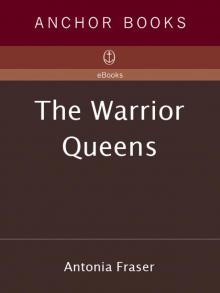 Warrior Queens
Warrior Queens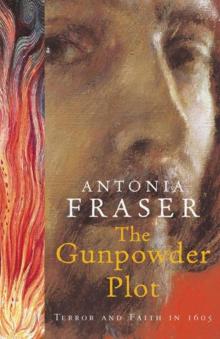 The Gunpowder Plot
The Gunpowder Plot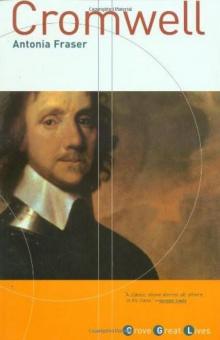 Cromwell
Cromwell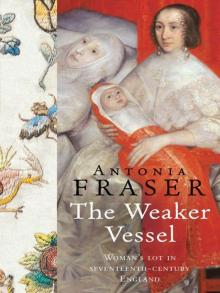 The Weaker Vessel: Women's Lot in Seventeenth-Century England
The Weaker Vessel: Women's Lot in Seventeenth-Century England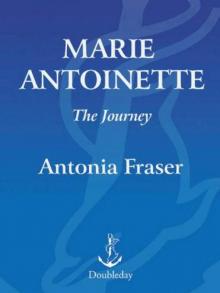 Marie Antoinette: The Journey
Marie Antoinette: The Journey Oxford Blood
Oxford Blood Your Royal Hostage
Your Royal Hostage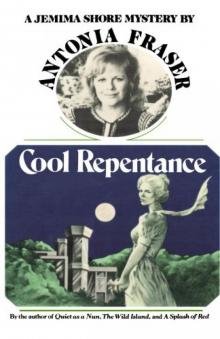 Cool Repentance
Cool Repentance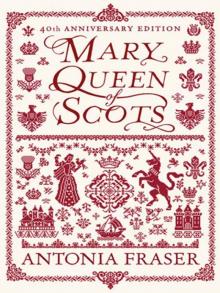 Mary Queen of Scots
Mary Queen of Scots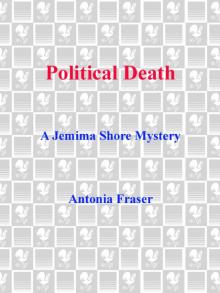 Political Death
Political Death Royal Charles: Charles II and the Restoration
Royal Charles: Charles II and the Restoration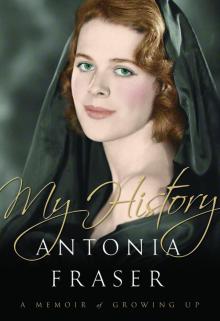 My History: A Memoir of Growing Up
My History: A Memoir of Growing Up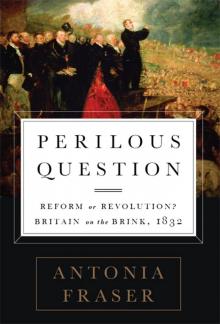 Perilous Question: Reform or Revolution? Britain on the Brink, 1832
Perilous Question: Reform or Revolution? Britain on the Brink, 1832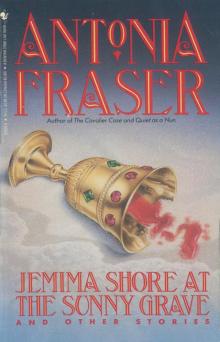 Jemima Shore at the Sunny Grave
Jemima Shore at the Sunny Grave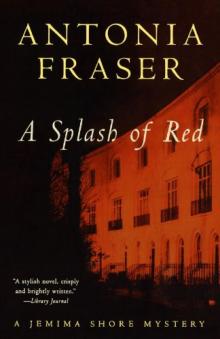 A Splash of Red
A Splash of Red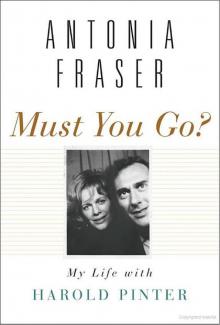 Must You Go?: My Life With Harold Pinter
Must You Go?: My Life With Harold Pinter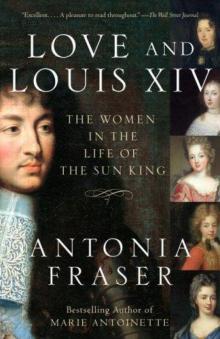 Love and Louis XIV: The Women in the Life of the Sun King
Love and Louis XIV: The Women in the Life of the Sun King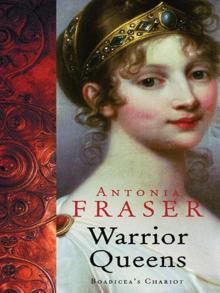 The Warrior Queens
The Warrior Queens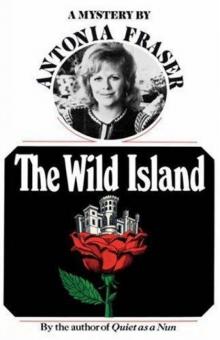 The Wild Island
The Wild Island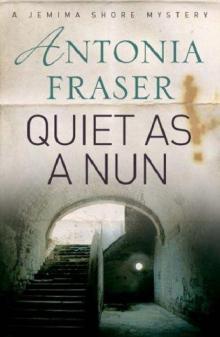 Quiet as a Nun
Quiet as a Nun Perilous Question
Perilous Question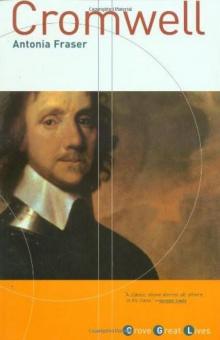 Cromwell, the Lord Protector
Cromwell, the Lord Protector Gunpowder Plots
Gunpowder Plots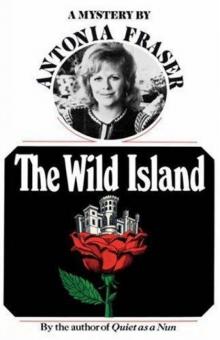 The Wild Island - Jemima Shore 02
The Wild Island - Jemima Shore 02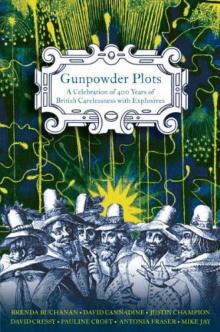 Gunpowder Plots: A Celebration of 400 Years of Bonfire Night
Gunpowder Plots: A Celebration of 400 Years of Bonfire Night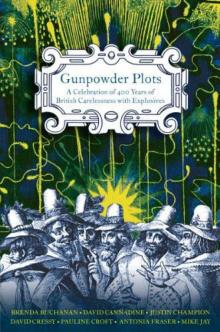 Gunpowder Plots_A Celebration of 400 Years of Bonfire Night
Gunpowder Plots_A Celebration of 400 Years of Bonfire Night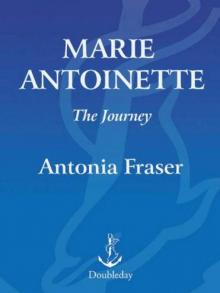 Marie Antoinette
Marie Antoinette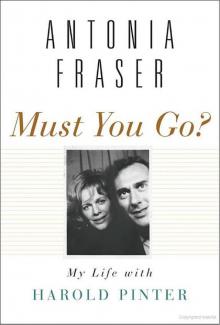 Must You Go?
Must You Go?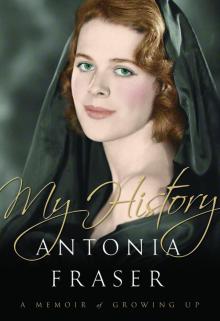 My History
My History